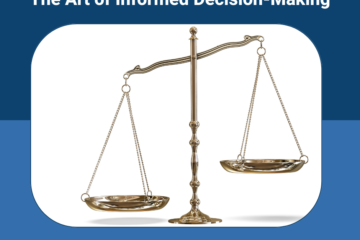
Introduction
In a world full of goods and services, what sets the successful ones apart from the rest? Usually, it’s a deep understanding of customer satisfaction, i.e., the customer’s wants, and a strong desire to meet those needs. Design Thinking is a strategy that puts the person who will use the product, service, or method at the center of the process of making it. This blog post explains what Design Thinking is and why it’s important for putting the customer at the center of development.
What is Design Thinking?
Design Thinking is a way to solve problems that is repetitive and focused on finding solutions. It tries to understand the user’s point of view and incorporates it into every step of making a product or service. It requires a unique mix of careful, analytical thinking and artistic, intuitive thinking.
The Five Pillars of Design Thinking: A Detailed Exploration
1. Identifying and Defining the Problem
What it’s about:
During the first part, a deep dive into the problem is done. Here, the goal is to get past the obvious signs of a problem and find out what is really going on.
Why it’s a big deal:
If you don’t know what the real problem is, any answer you come up with is likely to be wrong. Through interviews, observations, or “Day in the Life” studies, you can get to know the end users and understand their pain points, tastes, and needs.
Helpful Hints:
Interview users to get first-hand information.
Use observation methods to figure out how users act in a given situation.
Create user personas to act out the wants of different types of customers.
2. Brainstorming and Evaluating Potential Options
What it’s about:
This stage is all about coming up with ideas, or coming up with a lot of ideas that could solve the problem.
Why it’s a big deal:
Brainstorming helps you think of more than one way to solve a problem. It also keeps you from getting stuck on the first answer that comes to mind.
Helpful Hints:
Use tools like thought maps to come up with ideas.
Include team members from different fields to get different points of view.
Look at how possible, important, and relevant your thoughts are.
3. Developing the Prototype

What it’s about:
At this stage, one or more of the best ideas are turned into working models, or prototypes.
Why it’s a big deal:
Prototyping lets you see how the end product will look and work, which makes it easier to understand and improve.
Helpful Hints:
Start with sketches or other simple versions.
If you need to, move on to more detailed models or digital prototypes that you can work with.
Make sure that the sample tests the most important or dangerous parts of the idea.
4. Testing, Refining, and Repeating

What it’s about:
Here, the prototype is put to the test in the real world. End users’ comments are collected and looked at.
Why it’s a big deal:
During testing, the assumptions made during the problem-finding and brainstorming processes are proven or disproven. It gives us a chance to make changes to the answer before we roll it out to everyone.
Helpful Hints:
Users should be part of the testing step.
Use both controlled settings and situations that happen in the real world when testing.
Get ready for more than one round. The pattern of design-test-refine may need to be done more than once.
5. Measuring the Results
What it’s about:
In the last step, a thorough evaluation is done to see how well the new answer solves the original problem.
Why it’s a big deal:
Measuring the results proves that the whole Design Thinking method worked and gives information for any future iterations.
Helpful Hints:
Key Performance Indicators (KPIs) can be used to measure progress.
Collect qualitative feedback to learn more about how well the answer is being received.
Use the information to keep making things better or to start new projects.
By knowing and using these five pillars, you’ll be able to put Design Thinking to good use and make sure that your solutions are not only new but also well-suited to user needs.
The Importance of a User-Centric Approach: Why It’s More Than Just a Buzzword
Prioritizing the User
Design Thinking requires that every step of the process of fixing a problem be done with the end user in mind. This method makes sure that the end product is not only functional and efficient, but also improves the user’s experience. This is done by making all decisions based on how best to serve the user.
Why this method will work
Improved Customer Retention
What it’s about:
Customers who are happy with your product or service are much more likely to keep using it, which increases the total value of your business.
Why it’s important:
Getting a new customer is often more expensive than keeping an old one. Keeping your current customers happy can help your bottom line in a big way over time.
Bottom line:
Use feedback loops from customers and reviews after the launch to improve the user experience over time.
Competitive Advantage

What it’s about:
When your product or service meets the wants and pain points of users, it makes it stand out in the market.
Why it’s important:
In the crowded market of today, being “good enough” isn’t always enough. Design Thinking helps you do more than your competitors to stand out.
Bottom line:
Keep an eye on market trends and customer feedback to make sure your product stays ahead of the competition.
Greater Team Collaboration: Best Customer Satisfaction Techniques
What it’s about:
Design Thinking is interdisciplinary by nature, bringing together areas like marketing, engineering, and design to talk together.
Why it’s important:
Different points of view lead to better ideas and stronger answers, which improve both the process and the result.
Bottom line:
Encourage open lines of contact between departments and make sure that everyone with a stake in the project has a say in how it’s made.
Cost effectiveness
What it’s about:
By finding problems early on and fixing them, you can escape the time and money that come with making big changes later.
Why it’s important:
Problems are often easier and cheaper to avoid than to fix after the start. In the long run, getting feedback early on can save a lot of money.
Bottom line:
Invest in thorough user study and prototypes to avoid having to make expensive changes later on.
By using Design Thinking, which is based on putting the person first, companies don’t just make products; they make experiences. These improved experiences help customers be happy, keep coming back to a brand, and, in the end, help the business succeed in the long run.
Conclusion
Design Thinking is a method to development that changes the way things are done by putting the user first. It uses both analytical and creative thinking to come up with answers that not only fix the problem but also make the user happy. Design Thinking is a proven way to achieve success while deeply understanding and meeting customer needs, whether you’re making a new product, improving a current service, or trying to solve problems within your own company.
So, isn’t it time that your development plan put the customer at the center? Adopt Design Thinking to open the doors to new ideas and happy customers.



0 Comments